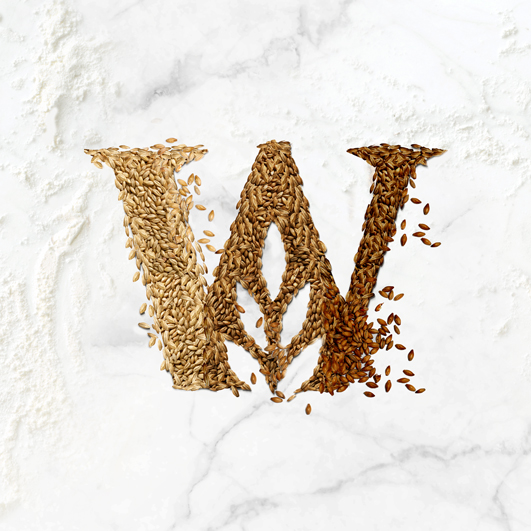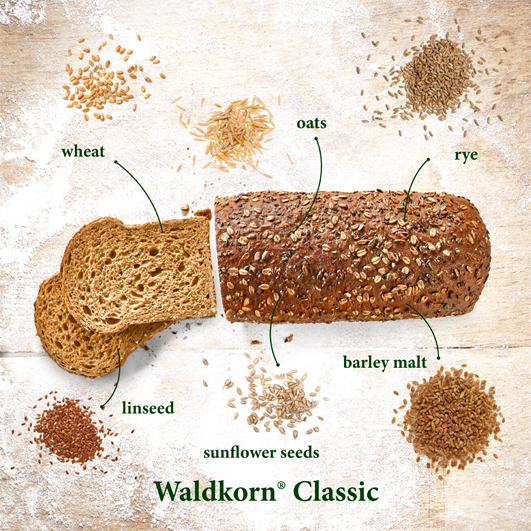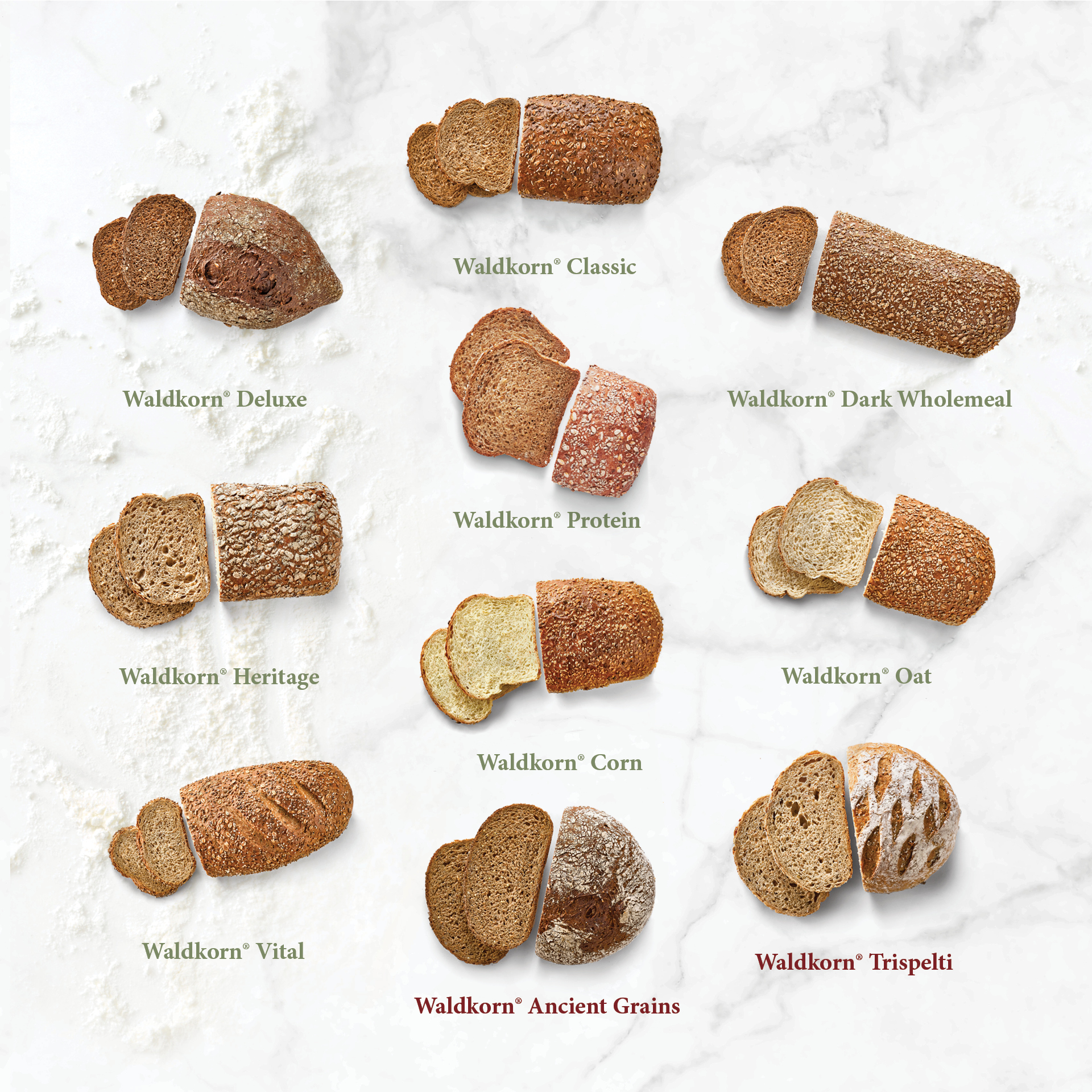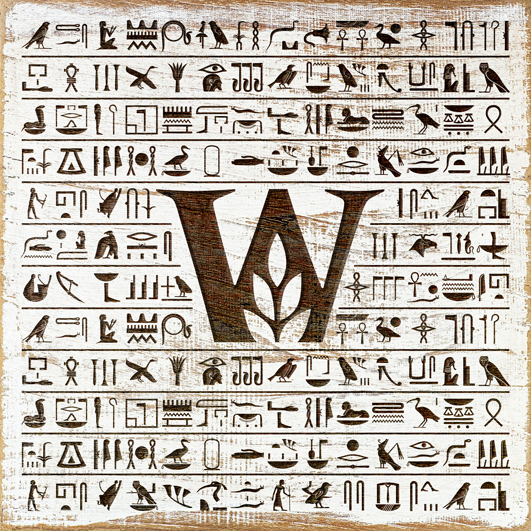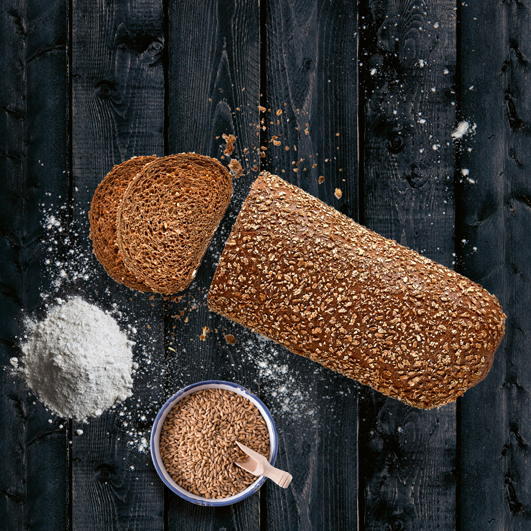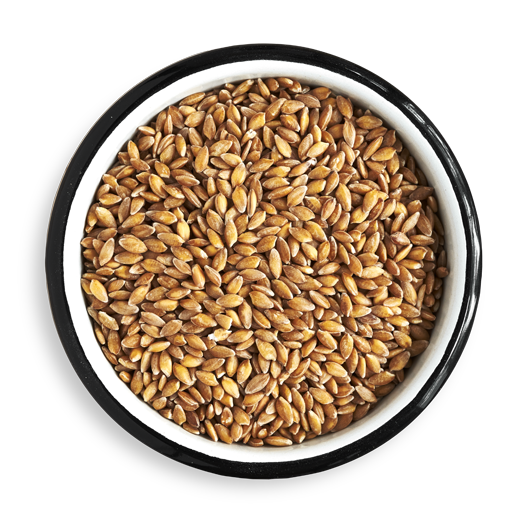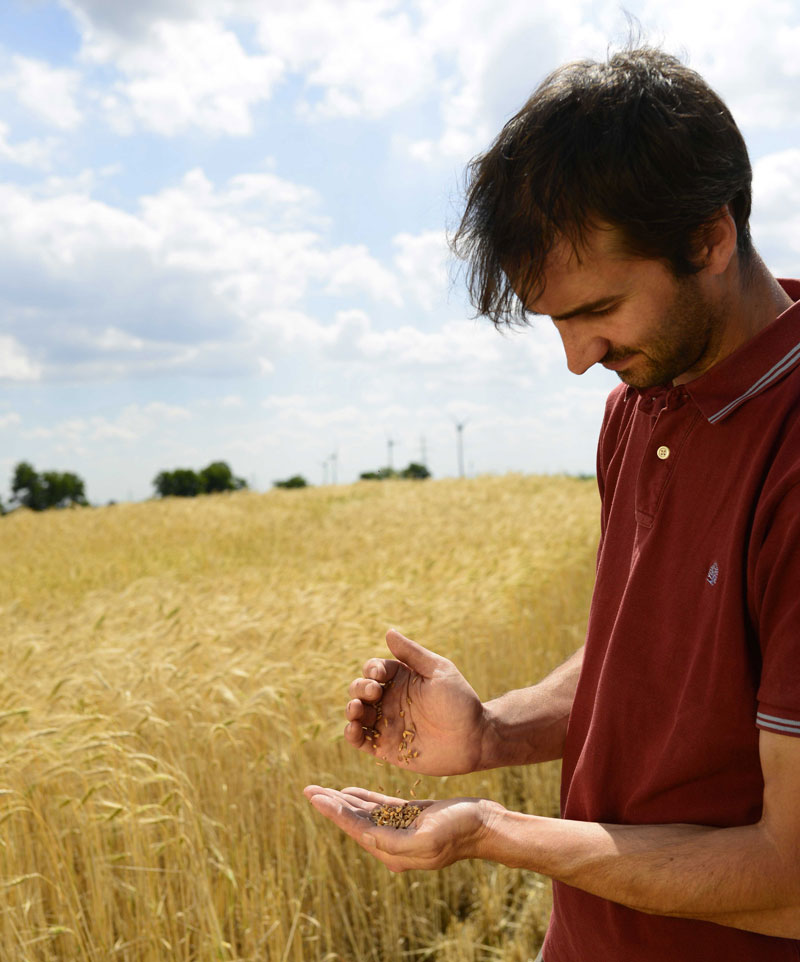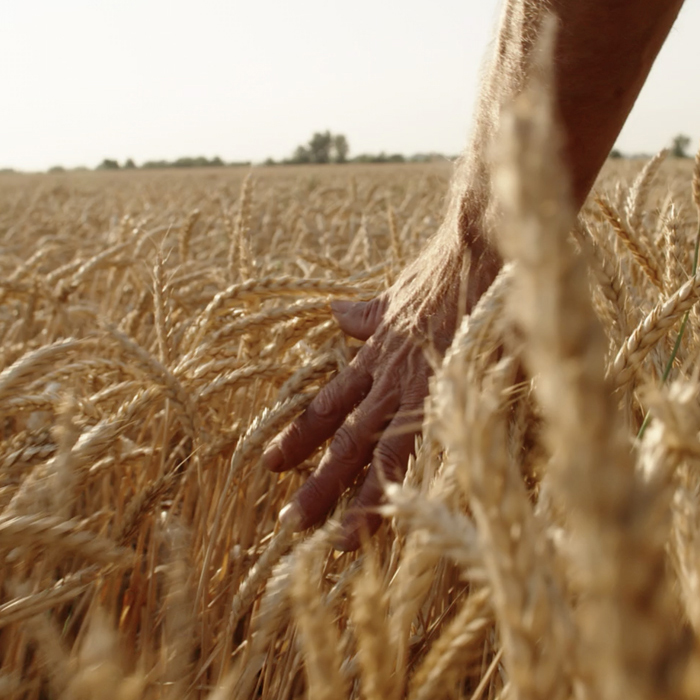You’ve probably already heard a lot about wholemeal, but what exactly is it? Wholemeal bread always contains 100% wholemeal flour. This is made of whole grain kernels (endosperm, germ and bran – in their natural proportions) and therefore contains all the good dietary fibres, vitamins and minerals that you need for a balanced diet.
The positive effects of wholemeal products can be attributed mainly to the large quantity of fibre that they contain. Ideal for optimal digestion and for feeling full for longer after eating. Wholemeal bread can be made of meal based on different types of grain: wheat, spelt, rye or another type.
At the moment, Waldkorn® has three varieties based on wholemeal grain: Waldkorn® Dark Whole Wheat (available from supermarkets and bakers), Waldkorn® Deluxe and Waldkorn® Ancient Grains (available from bakers).







